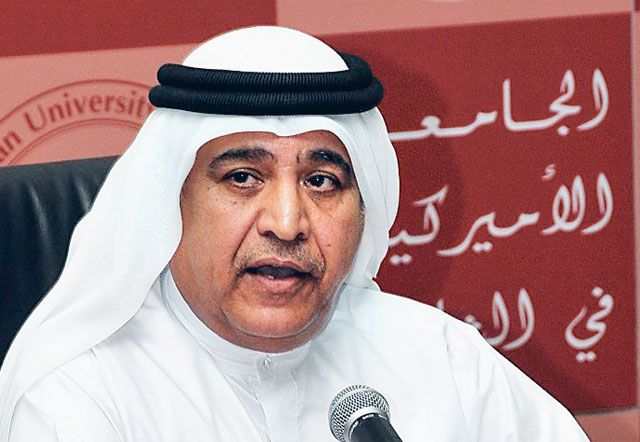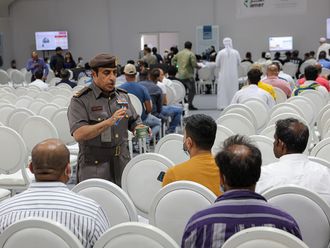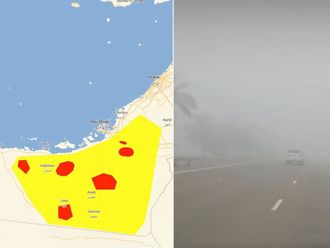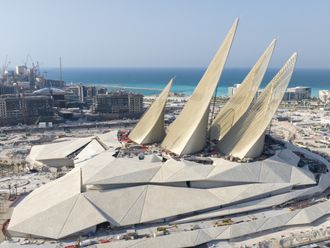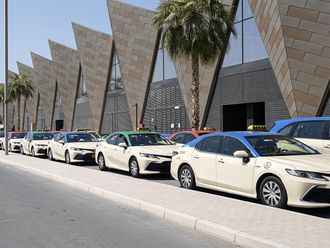Students at the American University of Sharjah were reminded by a leading Emirati intellectual of their fortunate access to quality education thanks to the efforts of the founders of the UAE.
As guest lecturer on the topic of "The Formation of the UAE Federation", Mirza Al Sayegh, Investment Adviser to Shaikh Hamdan Bin Rashid Al Maktoum, Deputy Ruler of Dubai and UAE Minister of Finance, said: "What we need is a historical review of the UAE from a perspective of the people who worked very hard to bring what you see today."
Al Sayegh told a filled lecture hall that students of his generation were given scholarships by the British, who still occupied the area in 1967, to study at university in Jordan.
"The remuneration for students was £10 (Dh58.60) a month," he said. "So you are very lucky to be able to make use of such facilities."
Al Sayegh took students from the 18th century to the modern day. He said during British rule the rulers of the seven emirates at the time had been formed under one council illustrating the idea of a union as early as the 1950s. This led to the formation of the UAE in December 1971.
However, the union under the British had one significant difference. "The council had a British political agent as a government member in addition to the seven rulers," he said.
Al Sayegh said the Arab-Israeli conflict in 1967 was followed by the decision of the British to withdraw from the area by the end of 1971 due to economic troubles back home. "The cost at that time of having British troops in the areas totalled £100 million a year."
The announcement of the withdrawal sent shockwaves through the region. "There was uncertainty and a mixture of feelings of joy and sadness," said Al Sayegh.
The formation
Al Sayegh, also a board member of the Al Maktoum Institute for Arabic and Islamic Studies in Scotland, UK, said prior to the British withdrawal the rulers of the emirates at the time captured an opportunity.
He said Shaikh Rashid Bin Saeed Al Maktoum called for the nine rulers of the areas of the seven Emirates, as well as Qatar and Bahrain, to come together to discuss their future "in the wake of new developments — especially oil exploration and the advent of foreigners in the area".
He said in February 1971, Shaikh Zayed and Shaikh Rashid signed the documents forming the UAE between Abu Dhabi and Dubai, calling for the other five emirates of Sharjah, Ras Al Khaimah, Umm Al Quwain and Fujairah as well as Qatar and Bahrain to join.
Bahrain and Qatar responded rapidly, preferring to declare independence in August and September, 1971, respectively. They were preceded by Oman, which declared its independence from the union in July. "The idea was the 10 areas become one," he said. Of the original founder of the UAE, His Highness Shaikh Saqr Bin Mohammad Al Qasimi, Member of the Supreme Council and Ruler of Ras Al Khaimah, remains the last surviving original member.


